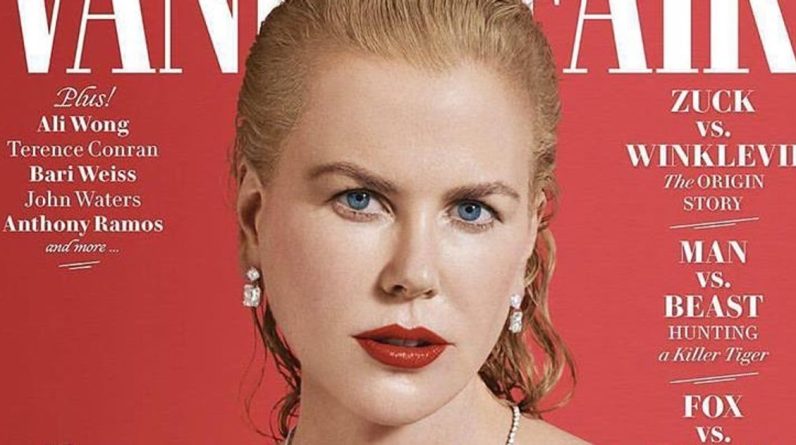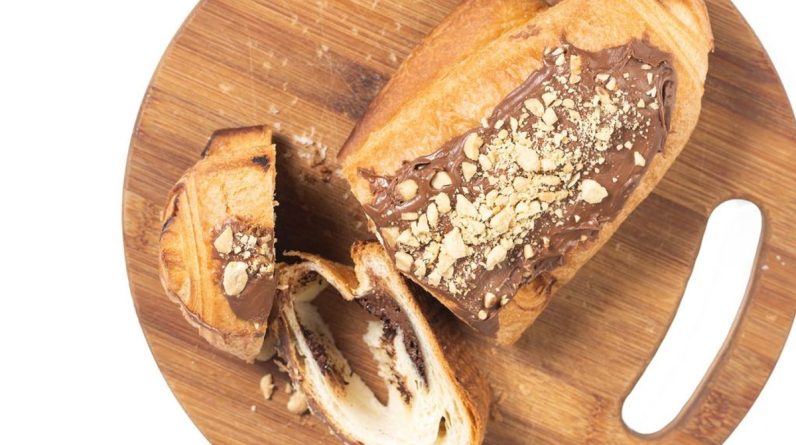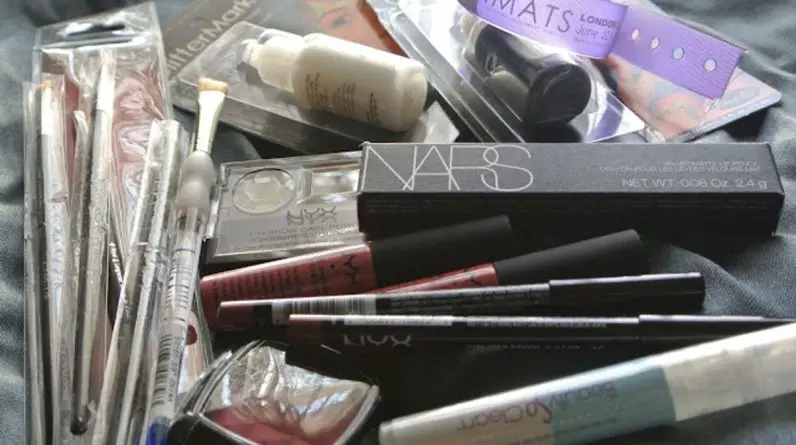In the ever-changing fashion landscape, defining your unique style is a powerful form of self-expression. It’s about more than just following trends; it’s about crafting a wardrobe that embodies your creativity, values, and individuality. This article delves into the methods for creating a style that is authentically yours, providing guidance on how to discover your style DNA, cultivate a signature look, and invest in quality over quantity. With the insights from fashion insiders and practical tips, you’ll learn to embrace experimentation and evolution in your fashion journey, ensuring that your personal style resonates with who you truly are.
Contents
- 1 Discovering Your Style DNA
- 2 Cultivating a Signature Look
- 3 The Art of Mixing and Matching
- 4 Investing in Quality Over Quantity
- 5 Embracing Experimentation and Evolution
- 6 Conclusion
- 7 Frequently Asked Questions
- 7.1 How can I identify my personal style archetype?
- 7.2 Why is it important to consider color and texture in my wardrobe?
- 7.3 How do I balance trendy pieces with timeless items in my wardrobe?
- 7.4 What are some tips for integrating signature pieces into my look?
- 7.5 How can I create outfit formulas that work for me?
- 7.6 Why is it important to invest in quality over quantity in clothing?
Key Takeaways
- Identify your style DNA by exploring personal archetypes and incorporating key elements such as color and texture that align with your personality.
- Develop a signature look with statement pieces and accessories that reflect your individuality, balancing consistency with variety to maintain a unique style.
- Master the art of mixing and matching by creating versatile outfit formulas and transitioning looks from day to night to maximize your wardrobe’s potential.
- Prioritize investing in well-made clothing, focusing on quality over quantity, to build a sustainable and ethical wardrobe that stands the test of time.
- Embrace experimentation and evolution in your style, stepping outside your comfort zone and adapting your look to life changes for continual self-expression.
Discovering Your Style DNA

Exploring Personal Style Archetypes
Discovering your style DNA involves understanding the unique combination of your personality, lifestyle, and aesthetic preferences. It’s about finding the archetypes that resonate with you and using them as a foundation to build your wardrobe. Reflect on your personality and lifestyle to determine which styles align with your daily routines and self-expression.
Experimentation is your best friend on this journey. Start by pairing unexpected textures and colors, and trying on silhouettes that you might have previously overlooked.
Identifying your style can be as simple as selecting a few keywords that resonate with you. For instance, if you’re drawn to ‘beauty’, ‘fashion’, and ‘makeup tutorials’, these interests can guide your style choices. Below is a list of common style archetypes you might explore:
- The Classic: Timeless pieces that exude elegance
- The Bohemian: Free-spirited and eclectic
- The Trendsetter: Bold and fashion-forward
- The Minimalist: Clean lines and simplicity
- The Romantic: Soft textures and feminine details
Remember, your style should feel like home, a true reflection of who you are. Whether you’re inspired by the latest ‘Korean fashion trends‘ or prefer a more ‘timeless’ approach, the key is to embrace your individuality.
The Importance of Color and Texture in Your Wardrobe
Understanding the color palette that complements your skin tone is crucial for creating a look that enhances your natural beauty. Colors that suit you can transform an outfit from ordinary to extraordinary. Similarly, the texture of your clothing plays a significant role in how your style is perceived. A mix of textures adds depth and interest to your ensemble, making it visually appealing.
- Identify your skin tone: Warm, cool, or neutral.
- Choose complementary colors: Enhance your natural features.
- Mix textures: Combine smooth, rough, and patterned fabrics.
Remember, it’s not about a complete wardrobe overhaul overnight. Introduce new pieces gradually and see how they fit with your vibe.
Tailoring also matters; well-fitted clothes can elevate your look significantly. Consider getting key pieces tailored for a polished and custom look. And don’t forget to accessorize thoughtfully—quality accessories like scarves, watches, and belts can make a statement and reflect your personal style.
Balancing Trendiness with Timelessness
In the quest to define a personal style, the challenge often lies in balancing the allure of new trends with the enduring appeal of timeless pieces. It’s about finding harmony between the dynamic nature of fashion and the classic elements that withstand the test of time.
- Identify your core style preferences and build around them with timeless basics.
- Integrate select trendy items that resonate with your personal aesthetic.
- Reassess your wardrobe periodically to ensure it reflects your current style and life phase.
Embrace the fluidity of fashion by allowing your style to evolve, but anchor it with timeless pieces that serve as the foundation of your wardrobe.
Understanding the cyclical nature of trends can empower you to make discerning choices. By selectively incorporating contemporary elements into a wardrobe grounded in classics, you create a style that is both current and uniquely yours.
Cultivating a Signature Look

Identifying and Integrating Signature Pieces
Creating a unique style often hinges on the identification and integration of signature pieces into your wardrobe. These are items that resonate deeply with your personal aesthetic and consistently make you feel confident and authentic. To begin this process, reflect on the garments that bring you joy and align with your style DNA.
- Assess your current wardrobe: Identify which items you gravitate towards and which ones remain untouched.
- Consider the emotional connection: Some pieces hold sentimental value but may not fit your current style narrative.
- Look for versatility: Choose pieces that can be mixed and matched to form the backbone of your daily outfits.
Your signature pieces should not only reflect your personal style but also adapt to various occasions and settings.
Remember, while it’s tempting to follow the latest ’90s center parts and 3D embellishments, your signature pieces should be timeless and not solely influenced by fleeting trends. A well-chosen signature piece can elevate your look, whether it’s a statement accessory or a tailored garment. Regularly visit websites that offer fashion tips and tutorials to stay inspired and informed on how to best showcase your signature items.
The Role of Accessories in Defining Your Style
Accessories are not just complementary items; they are pivotal in shaping and defining your personal style. A statement necklace or a vintage watch can transform an ordinary outfit into a reflection of your unique aesthetic. Accessories offer a way to express individuality without the commitment of a full wardrobe overhaul. They can be the defining feature of your look, or serve to subtly enhance the overall ensemble.
- Consider the following when choosing accessories:
- Relevance to your personal style
- Versatility and ability to mix with different outfits
- Impact on the outfit’s visual appeal
Embrace the power of accessories to elevate your style. Whether it’s through a bold hat, an artisanal ring, or a sleek belt, these pieces can articulate your fashion narrative in a way that clothing alone cannot.
Remember, the key to a successful style is not just in the clothes you wear, but in the details that bring them to life. Accessories are the exclamation point of an outfit, the final touch that says ‘this is who I am.’
Consistency vs. Variety: Striking the Right Balance
Creating a unique style often involves finding the perfect equilibrium between consistency and variety. Consistency in your wardrobe ensures that you have a recognizable signature look, while variety allows you to adapt and stay fresh. It’s about blending the familiar with the unexpected to keep your style dynamic yet identifiable.
- Identify your core style elements that define your look.
- Introduce new pieces that complement these elements without overshadowing them.
- Experiment with different textures, colors, and patterns while maintaining a cohesive theme.
Embrace the idea that your style can evolve while still reflecting your personal brand. It’s not about a complete wardrobe overhaul overnight, but rather a thoughtful integration of new and exciting pieces.
Remember, the goal is to craft a wardrobe that feels both personal and versatile. Whether you’re drawn to budget outfit ideas or high-end fashion, the key is to curate pieces that resonate with your style DNA and allow for creative expression.
The Art of Mixing and Matching

Mastering the Mix: Combining Patterns and Prints
The key to mastering the mix of patterns and prints lies in understanding the balance between visual interest and harmony. Start by selecting one dominant pattern and complement it with subtler designs to avoid a chaotic look. Here’s a simple guide to get you started:
- Choose a dominant pattern, like stripes or florals, as your outfit’s focal point.
- Add a secondary pattern that shares a color with the dominant one to create cohesion.
- Use smaller, low-contrast patterns as accents to add depth without overwhelming.
- Consider the scale of patterns; mix large with small to maintain a balanced aesthetic.
Remember, the goal is to create an outfit that feels intentional and put-together, not just a random assortment of prints.
When integrating textures, think about how they will interact with the patterns you’ve chosen. A smooth, glossy fabric can complement a busy print by providing visual rest, while a textured material might enhance a simple pattern. Experimentation is key, but always aim for a look that feels uniquely yours, reflecting your personal style DNA.
Creating Outfit Formulas That Work for You
Creating outfit formulas is like having a personal style equation that ensures you always look put-together. Start by identifying your go-to pieces that make you feel confident and build around them. Mix and match these staples with different textures and accessories to add depth to your look.
- Base Layer: Choose a versatile piece like a white tee or a black dress.
- Statement Piece: Add an item that showcases your personality, such as a patterned blazer or a bold necklace.
- Completer Piece: Include a layer like a cardigan or jacket to polish the outfit.
- Accessories: Select shoes, bags, and jewelry that complement the overall ensemble.
Remember, the goal is not to create a uniform but to develop a reliable framework that can be adapted to various occasions and moods. This approach saves time and reduces decision fatigue while allowing for creativity and personal expression.
Once you’ve established a few formulas, rotate them to keep your wardrobe fresh and exciting. Experiment with different combinations and don’t be afraid to tweak your formulas as your style evolves.
Transitioning Outfits from Day to Night
The ability to transition an outfit from day to night is a crucial aspect of a versatile wardrobe. Start with a solid foundation, such as a classic dress or a pair of tailored pants, and layer accordingly. For daytime, keep it professional and understated with minimal accessories and a blazer or cardigan.
As evening approaches, swap out your flats for heels, add a statement necklace or earrings, and consider a bolder lip color to elevate the look. A clutch can replace a work tote to streamline your silhouette for nighttime elegance.
Remember, the key is in the details. Subtle changes can dramatically alter the perception of your outfit, making it suitable for a variety of occasions without requiring a complete change.
Here’s a simple checklist to help you transition your outfit:
- Swap out work shoes for evening footwear
- Add or change jewelry to something more eye-catching
- Exchange your day bag for a sleek evening clutch
- Layer with a stylish jacket or shawl for cooler evenings
- Refresh your makeup, focusing on eyes or lips for a night-time flair
Investing in Quality Over Quantity

The Long-Term Benefits of Choosing Well-Made Clothing
Opting for high-quality garments is not just a matter of personal preference, it’s an investment in your wardrobe’s longevity. Quality over quantity is a principle that pays dividends in the long run. Well-made clothing tends to last longer, look better, and even improve with age, unlike fast fashion items that may quickly lose their appeal or fall apart.
Durability is a key factor when it comes to well-made clothing. These pieces can withstand the wear and tear of daily life, often requiring less frequent replacements. This not only saves you money over time but also reduces waste, contributing to a more sustainable lifestyle.
By focusing on quality, you ensure that each item in your wardrobe truly earns its place, reflecting your style and values.
Here are some benefits of choosing quality over quantity:
- Longevity: Clothes that last longer reduce the need for constant shopping.
- Cost-effectiveness: Investing in fewer, higher-quality pieces can be more economical in the long run.
- Style retention: Quality clothes maintain their shape and appearance over time.
- Ethical considerations: Higher-quality often aligns with better labor practices and materials.
Remember, a well-curated wardrobe is not built overnight. It requires thoughtfulness and a commitment to personal style and ethical standards.
How to Identify Quality in Garments
Identifying quality in garments is crucial for building a wardrobe that is both sustainable and stylish. Look beyond the brand and focus on the craftsmanship and fabric of the clothing. High-quality garments often have a higher stitch density, which means they are more durable and can withstand regular wear and tear.
Fabric is a key indicator of quality. Natural fibers like cotton, wool, silk, and linen typically outlast synthetic ones and also offer better breathability and comfort. Check the seams and hems for even stitching and no loose threads, which can reveal the attention to detail that went into the garment’s construction.
Here are some aspects to consider when assessing the quality of clothing:
- Material composition and feel
- Stitching and seam integrity
- Hardware quality, such as zippers and buttons
- Fabric pattern alignment at seams
- Overall fit and structure
Remember, a well-made piece of clothing not only looks and feels better but also contributes to a timeless wardrobe that transcends seasonal trends.
Building a Sustainable and Ethical Wardrobe
Creating a wardrobe that is both sustainable and ethical is not just about making better choices for the environment, it’s about cultivating a relationship with your clothing that is mindful and intentional. By focusing on quality over quantity, you can build a collection of garments that not only last longer but also reflect your personal values.
Investing in well-made clothing often means looking beyond the price tag and considering the craftsmanship and the ethical practices of the brands you support. Here are some steps to guide you in building a sustainable wardrobe:
- Research the brands’ commitment to ethical labor practices.
- Look for transparency in their supply chain.
- Choose materials that are eco-friendly and durable.
- Consider the longevity of the garment’s style and its versatility.
Embrace the philosophy that less is more. A minimalist approach to your closet can lead to a richer and more fulfilling fashion experience.
Remember, a sustainable wardrobe is not built overnight. It’s a journey of making conscious choices, one piece at a time, and aligning your fashion decisions with your personal ethics and lifestyle.
Embracing Experimentation and Evolution

Stepping Outside Your Comfort Zone with Confidence
To truly define your look, embracing experimentation is essential. Fashion is not just about following trends; it’s a platform for self-expression and individuality. Start by experimenting with different textures, layering techniques, and accessories to discover what resonates with your personal aesthetic. Authenticity is the cornerstone of a style that reflects who you are.
Fashion is a journey of self-discovery. It’s about expressing who you are and confidently moving through the world. There are no strict rules, only guidelines and room for creativity.
Remember, your style should evolve with you. As you grow and change, so should your wardrobe. Don’t be afraid to try new things and step outside your comfort zone. Here are a few steps to help you get started:
- Identify a few keywords that resonate with your desired style.
- Pair unexpected textures and colors to see what combinations make you feel most like yourself.
- Try on silhouettes that you have previously avoided to expand your fashion horizons.
Evolving Your Style with Life Changes
As we navigate through different stages of life, our personal style naturally progresses alongside. Embracing the evolution of your style is not just about changing fashion trends, but also about adapting to new life roles and responsibilities. It’s about finding the harmony between your inner identity and your outer expression.
Style Personality is the key to ensuring that your wardrobe reflects who you are at any given time. Whether you’re entering the workforce, becoming a parent, or transitioning into retirement, each phase brings its own set of wardrobe requirements and preferences.
Remember, it’s not about a complete wardrobe overhaul overnight. Introduce new pieces gradually and see how they fit with your vibe. This step is all about having fun and exploring the vast landscape of fashion with an open heart.
To help you navigate this journey, consider the following points:
- Reassess your wardrobe at regular intervals to align with your current lifestyle.
- Experiment with new styles and pieces that resonate with your evolving self.
- Don’t be afraid to let go of items that no longer serve your style or life stage.
- Seek inspiration but stay true to what feels authentic to you.
Learning from Fashion Faux Pas
Every fashion journey is sprinkled with faux pas, but these missteps are not just embarrassments to be forgotten; they are valuable lessons in disguise. Embracing your fashion blunders can lead to a deeper understanding of your personal style and prevent future mishaps.
Reflect on what didn’t work and why. Was it the fit, the color combination, or the context of the outfit? Analyzing these elements can refine your style choices moving forward.
Here are a few constructive ways to learn from fashion faux pas:
- Keep a style journal to document what outfits didn’t feel right and ponder on the reasons.
- Share your experiences with friends or a fashion community; they can offer new perspectives.
- Revisit past mistakes after some time has passed; you might find new appreciation or ways to tweak them.
Remember, the goal isn’t to achieve perfection but to build a wardrobe that feels authentic and empowering. Your missteps are part of your style evolution, and acknowledging them is a sign of maturity and confidence in your fashion journey.
In a world where beauty and fashion are constantly evolving, it’s essential to stay ahead of the curve. That’s why we invite you to explore the latest trends and timeless tips on our website. Whether you’re looking for a fresh makeup tutorial, innovative hair hacks, or the newest nail art designs, we have something for everyone. Embrace the spirit of experimentation and evolution in your personal style journey. Visit us now and discover your next favorite look!
Conclusion
In the dynamic landscape of fashion, defining your unique style is both a challenge and a celebration of self-expression. It’s not about being swayed by every passing trend, but about curating a wardrobe that resonates with your personal ethos, creativity, and lifestyle. Quality should trump quantity, ensuring your clothing lasts and reflects your values. Embrace experimentation, seek inspiration, and don’t hesitate to mix and match to discover combinations that make you feel authentically you. Remember, your style is a powerful form of communication, telling your story without saying a word. So, invest time in developing a look that’s unmistakably yours, and wear it with confidence. After all, in a world of fast fashion and fleeting fads, a genuine and unique style is a statement of individuality that stands the test of time.
Frequently Asked Questions
How can I identify my personal style archetype?
To identify your personal style archetype, start by assessing your preferences in clothing, such as colors, patterns, and silhouettes. Seek inspiration from social media, fashion icons, and street style. Reflect on your lifestyle and personality to determine which styles resonate with you and make you feel confident.
Why is it important to consider color and texture in my wardrobe?
Color and texture are vital because they can influence how your outfits look and feel. They help to express your mood and personality, and can either elevate a basic look or add depth and interest to your style. Understanding which colors and textures work well for you can also help in creating a cohesive wardrobe.
How do I balance trendy pieces with timeless items in my wardrobe?
Balancing trendy pieces with timeless items involves integrating classic staples that never go out of style with a few on-trend items each season. This approach ensures your wardrobe is versatile and sustainable, while still allowing you to experiment with current fashion trends.
What are some tips for integrating signature pieces into my look?
To integrate signature pieces, choose items that reflect your personality and make you feel empowered. These could be statement accessories, a go-to jacket, or a pair of shoes that showcase your style. Ensure these pieces can be mixed and matched with other items in your wardrobe to create a variety of looks.
How can I create outfit formulas that work for me?
Creating outfit formulas involves identifying combinations of clothing that you feel great in and that suit your lifestyle. Start with basic pieces and add layers or accessories to build up the look. Keep track of outfits that make you feel confident and use them as templates for future dressing.
Why is it important to invest in quality over quantity in clothing?
Investing in quality over quantity is important because well-made clothing tends to last longer, look better, and is often more sustainable. Quality pieces can become the backbone of your wardrobe, providing a better fit and timeless style that withstands fast fashion trends.







